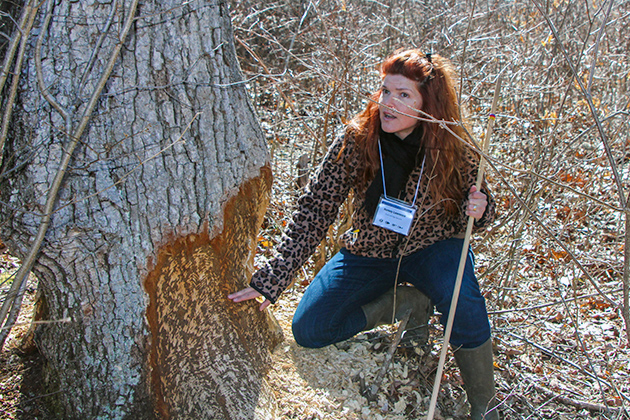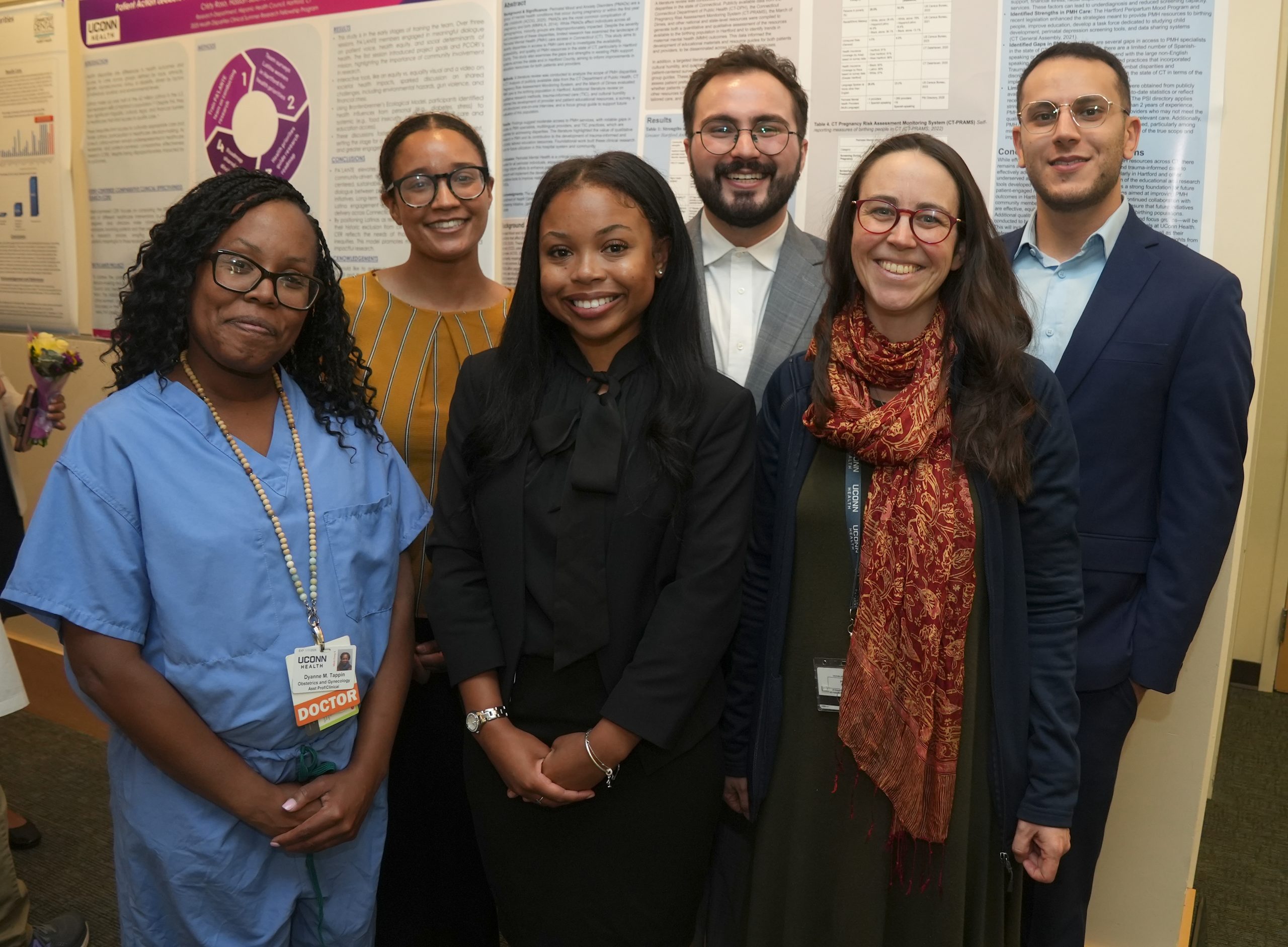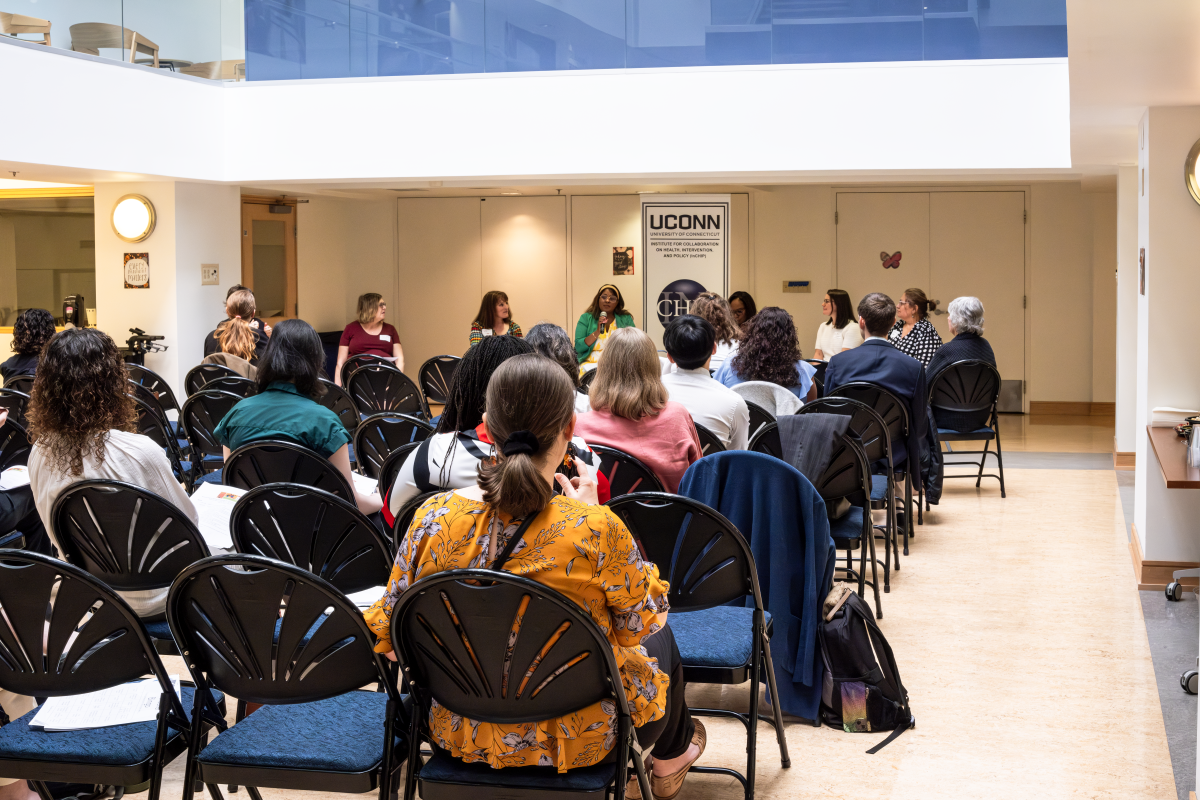Kersey Lawrence ’99, ’09 doesn’t miss much. A Ph.D. candidate in Natural Resources and the Environment in the College of Agriculture and Natural Resources, Lawrence combines a love of the outdoors with a passion for teaching. To that, she has added an appreciation for the history behind one of mankind’s oldest skills, the tracking and trailing of wild animals.

Lawrence first developed an interest in tracking while completing her B.S. in Natural Resources Management. That is when she first went to Africa to learn the ancient art from those who are considered the best trackers in the world … the Shangaan people who live in the area between the Kruger National Park and the Drakensberg Mountains, in South Africa’s Mpumalanga and Northern Province.
“I wanted to go to Africa and learn tracking from the Shangaan because they are the acknowledged masters of the art,” she says. “I have traveled to Africa every summer since 2008, and I spent one of my early visits taking a course in field guiding and tracking. That’s when I first learned about a software tool called CyberTracker that involves using a hand-held, GPS-capable computer – there are icons rather than words – so trackers who aren’t literate can still record what they see.
“In this way, a trained tracker, even someone who can’t read or write, can actively contribute to monitoring projects in parks, or as part of scientific studies. By pushing an icon, an animal’s behavior can be recorded, in some cases down to the most-minute detail.”
Along with the software, Lawrence also learned about the CyberTracker ‘tracker evaluation process’ which measures tracker reliability.
This means of evaluating the abilities of individual trackers provides assurance that when information is recorded it can be evaluated according to the demonstrated expertise of the person reporting the data. There are multiple levels, each requiring more in-depth knowledge.
Lawrence successfully passed all the tests in this process and then became the first non-African woman, and the second woman overall, to achieve certification as a Professional Tracker.
Melding old and new knowledge

Some might wonder why tracking wild animals is important in an age when even remote communities are linked by computers and where industrialization is increasingly overtaking rural landscapes. For Lawrence, there are a number of answers.
In South Africa, the ancient ways of the Shangaan trackers are disappearing because young people are looking for more lucrative ways to make a living. “Tracking skill and the oral history that goes with it have been handed down from generation to generation, and now they are in danger of being lost,” Lawrence says. “I would like to give young people a reason to continue learning the old traditions by putting them to good use.
“In a perfect world, I would like to be able to set up true experiential expeditions to different parts of the world where people from indigenous cultures could be employed to show people from the modern world how to experience the natural environment around them.”
She continues, “One of the things the CyberTracker system facilitates is the ability to take trained trackers from anywhere in the world and place them in different surroundings. For instance, I’m interested in a project in Wyoming [Panthera’s Teton Cougar Project] that is evaluating cougar population dynamics. I would love to be able to bring South African trackers here and have them follow those mountain lions so that we can learn more about their environment, their social interactions, and how we might be able to get them to co-exist with people as their range gets smaller.

“This would benefit the trackers, the field biologists doing the research, and the population as a whole – not to mention the animals who are so often viewed as being a nuisance when they are just trying to survive.”
Lawrence adds that while she is fascinated by the natural world, she is also continually improving a philosophy of teaching that will enable her to reach students who may have different learning styles.
She has earned a Certificate in College Instruction and received an award for Outstanding Graduate Teaching from UConn’s Center for Excellence in Teaching and Learning, and is focused on developing her ability to reach out to students on every level.
“My research takes me to places like Patagonia in Chile, Limpopo and Kruger in South Africa, and the Grand Tetons in Wyoming, where I’m doing ongoing studies in observer reliability with trackers. Locally, I teach at a nature connection program that is part of a home schooling curriculum for kids, and I often do tracking seminars on a volunteer basis for people of all ages. That’s in addition to the undergraduate courses I’ve taught in the department [of Natural Resources and the Environment] and the work I’ve done with the Center for Teaching and Learning,” she says.
Lawrence sums up her devotion to the environment and her dedication to teaching by saying, “My goal is to engage people in the natural world. I’m trying to get them to slow down, to observe, and to ask questions. Tracking requires that you be observant. There’s a connection to the environment, and once someone develops a personal relationship to the environment, they are much more inclined to defend it.”



